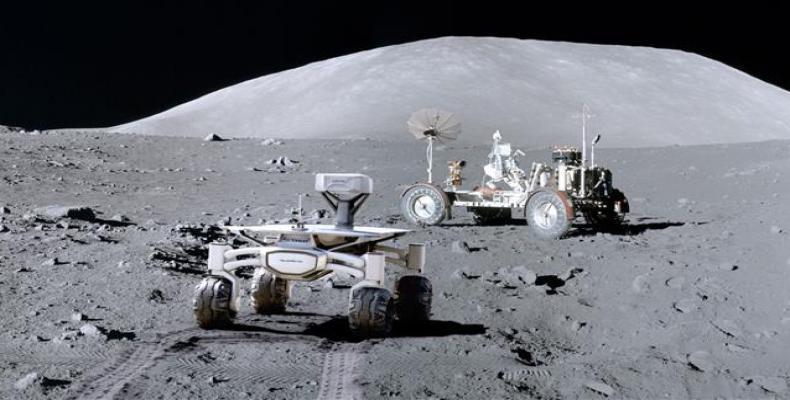New York, Feb 28 (RHC)-- The Earth’s sole natural satellite, the Moon, will get its first mobile network next year as Vodafone Germany and Nokia plans to bring the Long-Term Evolution (LTE) into space by installing a 4G network on our closest celestial neighbor, enabling high-definition streaming from the lunar landscape back to our cosmic home.
Vodafone Germany, network equipment maker Nokia and automobile manufacturer Audi announced the news on Tuesday, saying they were collaborating to support the mission, nearly half a century after the first NASA astronauts stepped on the lunar surface for the first time.
The telecoms companies also said that in order to land required equipment on the surface of the moon in 2019, they are also working with the PT Scientists, a Berlin-based space exploration company.
Vodafone, whose 4G signal will also be able to transmit high-definition video streaming from the lunar surface back to a mission control facility in the German capital, asserted that it had appointed Nokia, as its technology partner, to develop a space-grade network which would be a small piece of hardware weighing less than a kilogram.
“This project involves a radically innovative approach to the development of mobile network infrastructure” said Hannes Ametsreiter, CEO of Vodafone Germany.
The network will enable a pair of Audi lunar quattro exploration vehicles to communicate with each other and with a base station located in the Autonomous Landing and Navigation Module (ALINA), the first private spacecraft built by the PTScientists to transport and land the two rovers safely on the moon. The pair of rovers will approach the Apollo 17 lunar roving vehicle, which was employed in 1972 by the last astronauts to walk on the moon.
Meanwhile, Marcus Weldon, chief technology officer of Nokia and head of Bell Labs, noted that the ambitious mission will be critical to future space exploration, as trips will require that equipment is able to perform in extreme conditions. “Whether it is meteor mining or lunar landing or Mars we have to learn how to communicate in space,” he added.
Nokia masts will be launched on a SpaceX rocket next year from Cape Canaveral Air Force Station in Florida, USA.
According to an executive involved in the project, the decision to create a 4G network rather than a state-of-the-art 5G network was taken since the next generation networks still remain in the testing and trial stage and are not stable enough to guarantee that they would properly work from the surface of the Moon.
Vodafone, Nokia to bring LTE into space by installing first 4G network on Moon

Related Articles
Commentaries
MAKE A COMMENT
All fields requiredMore Views
- Euro-Med Monitor documents shocking crimes and torture against Palestinian prisoners in Israeli jails
- Venezuela repudiates CARICOM's support for provocations by President Irfaan Ali of Guyana
- Ye flaunts swastika T-shirt in Los Angeles
- Biden, Blinken, Austin referred to ICC for aiding and abetting Gaza war crimes
- Popular singer Paulo F.G. dies in car accident in Havana

